|
Advertisement
|
Corregidor: Fall of a Fortress -1942/1945
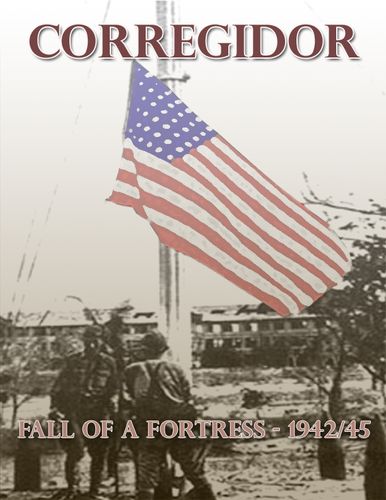
Description Corregidor: Fall of a Fortress 1942/1945, includes two games. The first game recreates the Japanese bombardment and invasion in 1942 and the second simulates the American airborne invasion and reconquest in 1945. EXTENDED GAME DESCRIPTION: CORREGIDOR is played in successive game turns composed of alternate player turns during which the phasing player maneuvers his units and resolves combat in sequence. Turns consist of the Administrative Phases (reinforcement arrival, disruption removal, Fired marker removal), the Air Attack Phase (which includes airborne assault), first Player Turn (AA fire, bombardment, invasion, ground movement, and combat), and then the second Player Turn. Some detail features of the game are tracking Japanese landing craft losses, American communications disruption, U.S. air and naval support points, unit disruption levels, and which artillery units have fired. The six hexes adjacent to an undisrupted land unit constitute that unit’s Zone of Control. Disrupted land units DO NOT have ZOCs, and therefore judicious use of support to disrupt enemy units allows the attacker to infiltrate through weak positions and to launch flanking attacks against defending units. This is critical because defending units are doubled and sometimes tripled by the rugged and the unique features on the maps, such as rough terrain, cliffs, elevation changes, tunnels, towns, and coast defense artillery emplacements. In the 1942 scenarios, there is a cat-and-mouse game which develops between the Japanese artillery and air units versus the American artillery and anti-aircraft defenses. Aircraft need to designate the altitude at which they conduct bombing – the lower the attack level the more accurate the bombing, but also the more accurate the AA fire. Similarly, artillery which fires is more vulnerable to counter-battery fire and so making a bombardment attack must be weighed against the possibility of return fire. In 1945, in addition to banzai options, the Japanese have the option to make suicide demolitions, which destroy the attacking unit but also damage adjacent units. There is a mechanism to occasionally compel such attacks, which not only forces some historicity but it also models the uncoordinated local Japanese command structure in 1945. Some optional rules included: Spike Rule - U.S. Batteries must be spiked when Japanese units come within two hexes to prevent them from being captured in usable condition. They may not be voluntarily destroyed until after a Japanese unit has landed on their island. Flip the battery over after the following U.S. Bombardment Phase. The unit may then move and fight normally. Restored Batteries - Roll one die on the turn of the American invasion in 1945 for the surviving former U.S. batteries: Additional U.S. Batteries - Three 240mm howitzer batteries which were to be installed in 1922 actually arrive. One battery is deployed anywhere on Fort Frank, one on Fort Hughes, and one on Fort Mills (Corregidor). Philippine Division Transferred - The 31st, 45th, and 57th Regiments are transferred to Corregidor prior to the fall of Bataan. Add them to the available U.S. forces in Scenario 11.1. Due to the effects of fighting on Bataan, plus short rations and disease, these units are deployed at reduced strength. As an additional option, they may be deployed at full strength to simulate these units being in better condition historically. Itagaki Rule - Japanese defense commander Capt. Itagaki did not believe an airborne assault could be made on Corregidor. He was killed on Topside during the initial paradrop, while waiting to observe the amphibious assault for which he had prepared. Additionally, his central communications station was overrun very quickly by the paratroops. In this rule, he is killed and no Japanese unit may move until the first night turn. U.S. Roving Batteries - During the campaign for Bataan and Corregidor, the U.S. created a number of “roving batteries” of 155mm guns by removing them from their emplacements and mounting them such that they could be moved about Corregidor. U.S. Searchlights - The U.S. had several searchlight batteries on the Fortified Islands. This option forces the Japanese to actually expend the effort to destroy them and if they are not, they provide some advantage to the U.S. Player. If a Japanese invasion or evacuation is occurring in a night turn and there is an active U.S. searchlight unit on the map, the U.S. Player receives a +2 die modifier (cumulative with any other DRMs) when firing on Japanese units in water hexes. If a Japanese air bombardment is conducted at night, U.S. Anti-aircraft fire receives an additional +1 modifier to any other DRMs which apply; Japanese Bombardment rolls receive an additional -1 modifier to any other DRMs which apply. Battery Way - Battery Way did not have a crew and was not operational until April 28. The U.S. might have activated this battery sooner. Roll at the beginning of the 0300 daily turn. The battery is active at full strength on a roll of 2 or 12. The battery becomes active automatically on Turn 65 if not activated sooner.
Game turn: Movement and combat on the Fortified Islands maps is in three-hour turns in 1942, and two-hour daylight turns in 1945, with night turns representing five hours each. There are also daily turns to keep track of reinforcements as well as to frame the complete campaigns. By mutual agreement, players may skip any daily or hourly turn in which neither player plans to execute any movement, combat, or bombardment. Hex scale: The scale of the Fortified Islands map is roughly 250 yards per hex; the scale of the Bataan map is roughly 1.25 miles per hex. Game DiscussionsAdd CommentYou need to be logged in to comment. Insert Bullet List Please enter at least one item. Item: Item: Item: Item: Item: Insert Numeric List Please enter at least one item. Item: Item: Item: Item: Item: Insert Link Please enter the link of the website Optionally you can add display text Insert Email Please enter the email address Optionally add any display text Insert Image Please enter the link of the image Insert YouTube Video Please enter the link of the video MarketplaceNo listings at the moment. Do you own this game? Click here to list it for sale.
Similar Games
|
Best Sellers
Board Games
|
||||||||||||||
Latest Searches: adventure teim | Super Dungeon Explore | camera roll | Elk grove o poly | xenoshyft onslaught card pack | Mijnlieff | rules for the game monster high share or scare | Cards+against+humanity+family+edition | loki action figure | Creighton+university | easy-bake oven | Said | tafle | mighty morphin power rangers tyrannosaurus dinozord | nauto | Marvel Legends Series Avengers: Endgame 6-in Figure Iron Patriot | Playskool Heroes Marvel Super Hero Adventures Iron Man Headquarters Playset, Iron Man | mind fuck | crekit | rage | language independent | Stinger | Kingdom Voyager WFC-K9 Cyclonus | traders of genoa | chicago blackhawks monopoly | Yours to claim | catch phrase unsensored | bap-blue bap-close bap-div bap-gradient bap-gray bap-img-container bap-notice bap-link-div color | one night ultimate werwolf | ohio opoly
All Rights Reserved

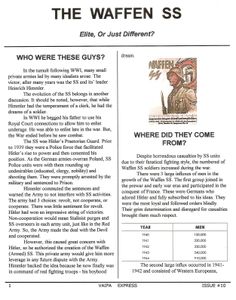

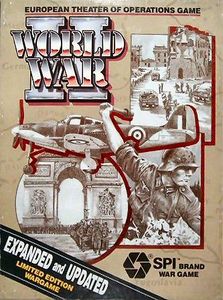
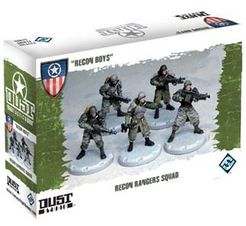
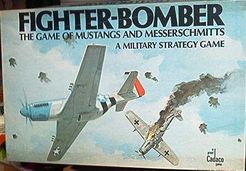
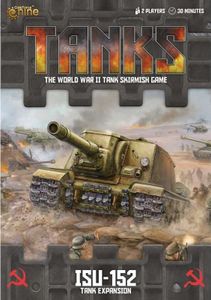


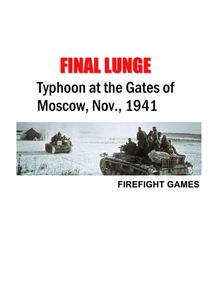
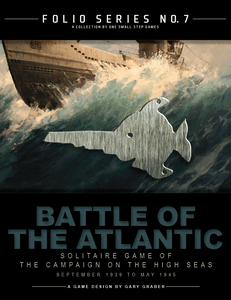
Comments (0)